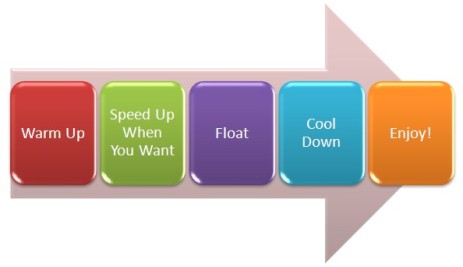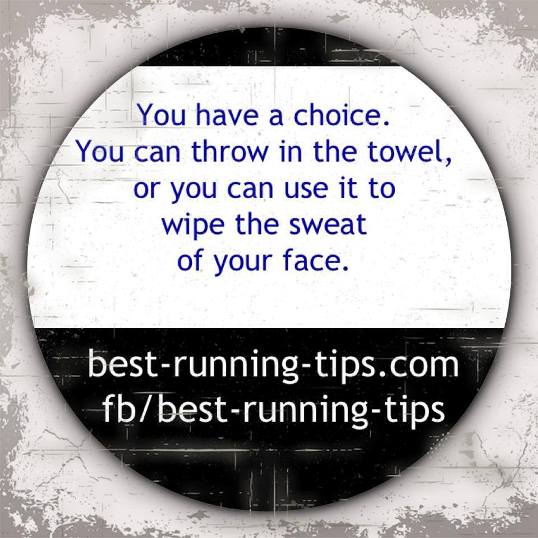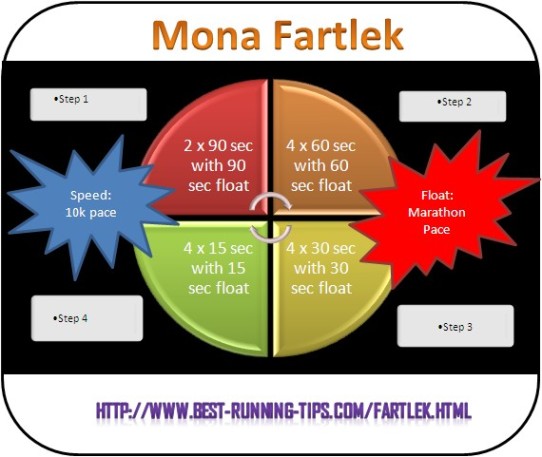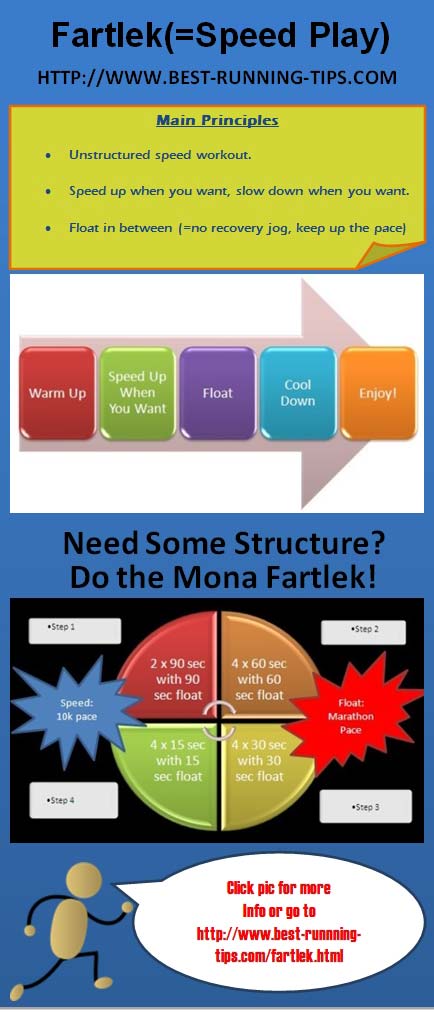Fartlek Workouts - Speed Play for Beginners (and the Advanced!)

Have you fartlekked recently?
I am not trying to be rude here... It's Swedish for speed play.
The principle of fartlek run training is basically the following:
So, it mixes faster running and slower running. But it purposely lacks structure.
Depending on your personality type you will think that is quite alright, or not good at all!
I used to hate it.
I never did it.
I wanted structure in my runs.
I didn't like just going out there and go by the feel of the moment to see how fast I would go and for how long.
Because, basically, every fartlek workout can be different.
So, there is no way to compare two sessions.
And I really needed that.
Why?
I guess I am a very structured individual.
So, I would like to see how one session may compare with the same session three months ago.
However, in the last few years I have mellowed a lot and I have lost a little bit of that competitive personality. Sure, I am still wanting to run quickly. But I am less "number-bound".
And I have learned that sometimes an unstructured session is just what I need!
Why Speed Play for Beginners?

Don't worry: the fartlek
has been lab tested
The playful nature of fartlek workouts makes it fun and makes you connect with your body.
And that makes fartlek workouts a good introduction to speed workouts for beginners: You can decide, based on how you feel, how much you'll push yourself.
If you start doing structured speed workouts from a running program you picked up somewhere and you are actually not really ready for it, you run the chance of getting yourself injured.
With fartleks the risk is smaller.
So, next time you go for a run, leave your watch at home, enjoy the scenery and go by feel.
I am sure you'll enjoy it!
By the way, that doesn't mean a fartlek workout isn't a great running workout for more advanced runners. It's great for anyone wanting to become a faster runner!
Starting off with Fartleks
Once you have started building a base, you'll get to a point you will want to do a bit of faster running.
But you don't feel quite ready yet for a taxing interval session.
Then a fartlek can be that happy medium. It will get you started with some faster running, without the pressure of running fast for a set number of intervals, set time or distance.
So, when you start out, simply do a good warm-up, then pick a landmark and run there at a higher speed. Float for a while (run at a somewhat lower pace, closer to easy running), then pick another landmark and run there.
It's fun to make up your fartlek runas you go along.
Fartlek Workouts - The Key Principles
Keep a few key principles in mind:

This is a quality session, so you want your legs to be ready for when you go faster. Start with a dynamic warm-up, then start your run with an easy 10-20 minutes to warm up your legs. Check out the Running Stretches page for more detail about dynamic warm-ups.
I often pick landmarks. E.g. street lights, shops, anything. Try to make an effort to play with distance and speed. You can bring a little bit of structure into it by going in a rhytm of three here: moderately fast, bit faster, almost full-out, then again, moderately fast, bit faster, almost full-out, etc.
You want to keep the heart rate up for the entire session. Go back to an easier pace, but try to avoid the slow jog or walk. Easier said than done! This may take some time to get used to, so don't be too hard on yourself when you find out you do need to do a short walk or slow jog at some point during your session.
So, you can see, it is in principle an unstructured workout. Fartlek workouts are a great way to start experimenting with speed.
OK, Some Structure For Those Who Need It...
MONA FARTLEK
Steve Moneghetti is a famous Australian marathon runner. He has won several big marathons (e.g. Berlin in 1990) and has picked up a Bronze in 1986, Silver in 1990 and Gold in 1994 in the Commonwealth Games marathons and won Bronze in the 1997 World Championships Marathon in Athens.
In other words, one of the true greats of our sport.
Mona (in Australia anyone with a name longer than one syllable gets a nickname!), had that same problem I was talking about before: he needed structure. His workout is called the Mona fartlek. It is as follows:
Mona Fartlek:
This is a pretty tough one. Trying to float between intervals is a skill. I quite often, still, after having done this workout many times, find myself slowing down in the floats.
However, that's ok. The good thing about this workout is that you can measure your total distance covered for the full 20 minutes (across intervals and floats) and check whether you are making progress. First time you do this workout you may get to 4 kilometres. Next time 4.2 kilometres. And so on. Progress in this workout is not just about the fast parts, but also about the floats.

This one is named after Julian "Moose" Spence, Australian marathon runner. His go-to fartlek workout is:
5 sets x 3min at about 10k/HM Effort, 1min jog, 1min at about 5k effort, 1min jog.
So, that's 30 minutes of quality right there!
PORTSEA FARTLEK
This fartlek workout is a bit more complex in its setup. And also in the execution. It's 36 minutes of quality and likely to be a little too hard as a fartlek for beginners. You could make it easier for yourself and start this one off with longer floats and shorter fast parts and work up to the "official" format.
The Portsea Fartlek is definitely a good one for a more advanced workout and suitable for marathon, half marathon and 10k preparation.
The Fartlek Workout in One Picture
For your convenience, and as a summary at the end of this article, I have tried to capture the main principles of fartlek running training in the picture below.
Hope it helps!
Home > Running Training > Fartlek Workouts







